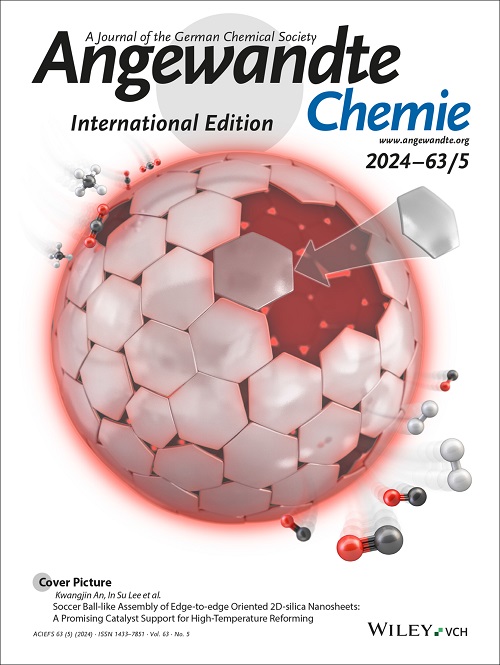Hydrogen Sulfide-Triggered Artificial DNAzyme Switches for Precise Manipulation of Cellular Functions
IF 16.1
1区 化学
Q1 CHEMISTRY, MULTIDISCIPLINARY
引用次数: 0
Abstract
The development of synthetic molecular tools responsive to biological cues is crucial for advancing targeted cellular regulation. A significant challenge is the regulation of cellular processes in response to gaseous signaling molecules such as hydrogen sulfide (H2S). To address this, we present the design of Gas signaling molecule-Responsive Artificial DNAzyme-based Switches (GRAS) to manipulate cellular functions via H2S-sensitive synthetic DNAzymes. By incorporating stimuli-responsive moieties to the phosphorothioate backbone, DNAzymes are strategically designed with H2S-responsive azide groups at cofactor binding locations within the catalytic core region. These modifications enable their activation through H2S-reducing decaging, thereby initiating substrate cleavage activity. Our approach allows for the flexible customization of various DNAzymes to regulate distinct cellular processes in diverse scenarios. Intracellularly, the enzymatic activity of GRAS promotes H2S-induced cleavage of specific mRNA sequences, enabling targeted gene silencing and inducing apoptosis in cancer cells. Moreover, integrating GRAS with dynamic DNA assembly allows for grafting these functional switches onto cell surface receptors, facilitating H2S-triggered receptor dimerization. This extracellular activation transmits signals intracellularly to regulate cellular behaviors such as migration and proliferation. Collectively, synthetic switches are capable of rewiring cellular functions in response to gaseous cues, offering a promising avenue for advanced targeted cellular engineering.硫化氢触发的人工 DNA 酶开关用于精确操控细胞功能
开发响应生物线索的合成分子工具对于推进有针对性的细胞调控至关重要。一个重大挑战是如何调控细胞过程以应对硫化氢(H2S)等气态信号分子。为了解决这个问题,我们设计了气体信号分子响应型人工 DNA 酶开关(GRAS),通过对 H2S 敏感的合成 DNA 酶来操纵细胞功能。通过在硫代磷酸酯骨架上加入刺激响应分子,DNA 酶在催化核心区的辅助因子结合位置被战略性地设计成具有 H2S 响应的叠氮基团。这些修饰使它们能够通过 H2S 还原衰变激活,从而启动底物裂解活性。我们的方法允许灵活定制各种 DNA 酶,以在不同情况下调节不同的细胞过程。在细胞内,GRAS 的酶活性可促进 H2S 诱导的特定 mRNA 序列的裂解,从而实现有针对性的基因沉默并诱导癌细胞凋亡。此外,将 GRAS 与动态 DNA 组装集成,可以将这些功能开关嫁接到细胞表面受体上,促进 H2S 触发的受体二聚化。这种细胞外激活将信号传递到细胞内,从而调节细胞的迁移和增殖等行为。总之,合成开关能够根据气体线索重新连接细胞功能,为先进的定向细胞工程提供了一条前景广阔的途径。
本文章由计算机程序翻译,如有差异,请以英文原文为准。
求助全文
约1分钟内获得全文
求助全文
来源期刊
CiteScore
26.60
自引率
6.60%
发文量
3549
审稿时长
1.5 months
期刊介绍:
Angewandte Chemie, a journal of the German Chemical Society (GDCh), maintains a leading position among scholarly journals in general chemistry with an impressive Impact Factor of 16.6 (2022 Journal Citation Reports, Clarivate, 2023). Published weekly in a reader-friendly format, it features new articles almost every day. Established in 1887, Angewandte Chemie is a prominent chemistry journal, offering a dynamic blend of Review-type articles, Highlights, Communications, and Research Articles on a weekly basis, making it unique in the field.

 求助内容:
求助内容: 应助结果提醒方式:
应助结果提醒方式:


